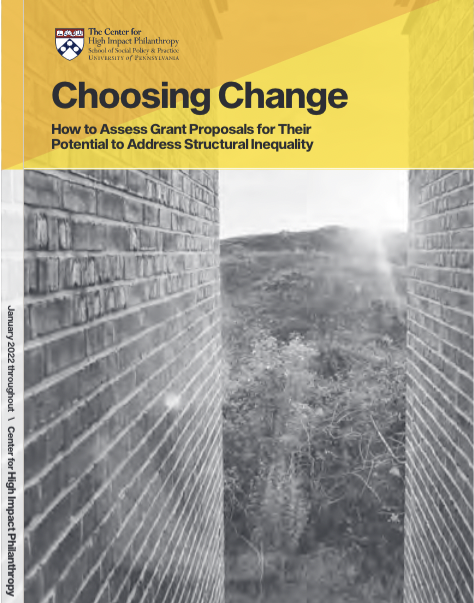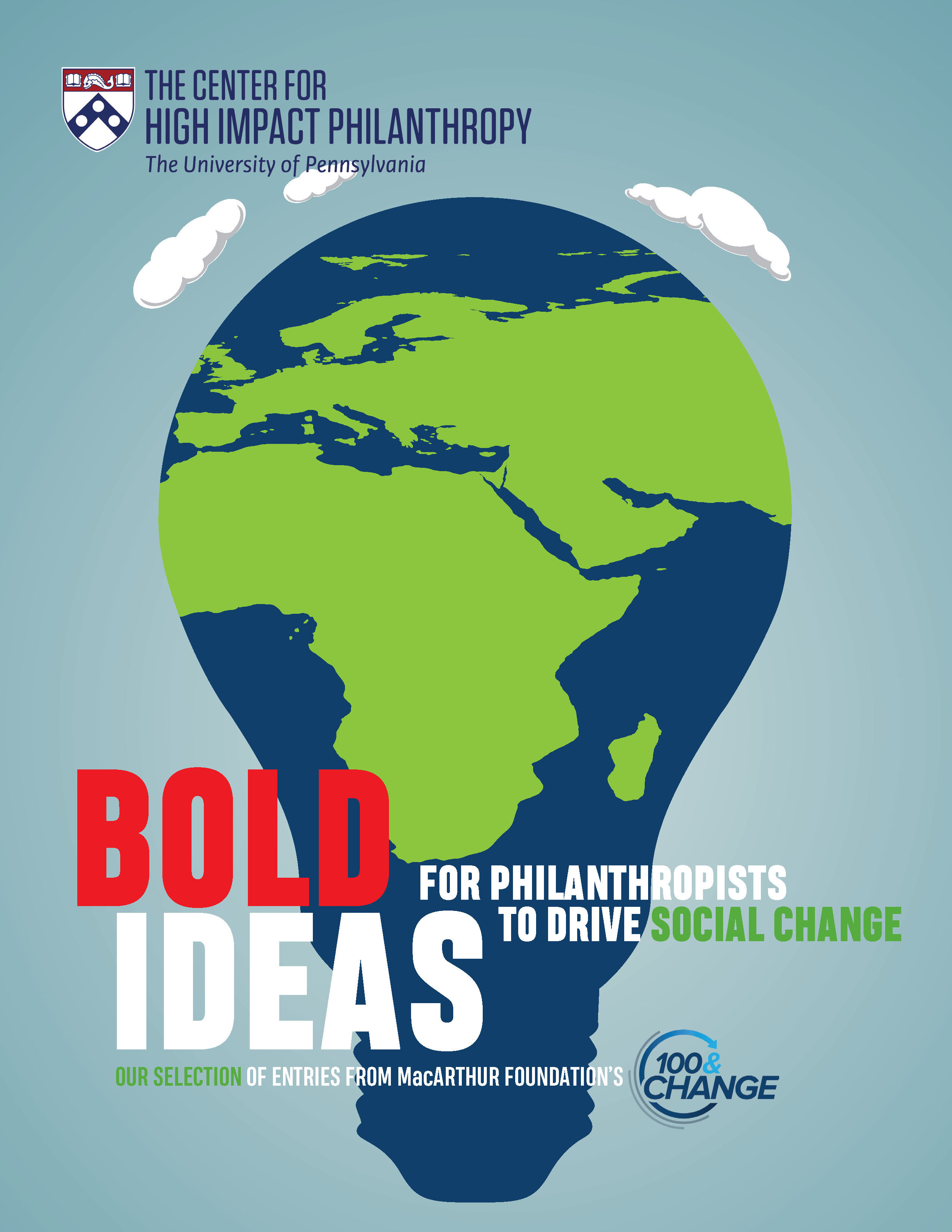How might funders better evaluate grants for their ability to reduce structural inequality?
For the past year, the Center for High Impact Philanthropy (CHIP) has been working to answer the question above by creating a rubric that donors and funders at all levels — from large institutional funders to individuals — can apply to their giving. Through our work with Lever for Change, a John D. and Catherine T. MacArthur Foundation affiliate, we’ve been applying that rubric to top projects submitted through their 100 & Change and Equality Can’t Wait competitions — proposals and teams that have potential to create significant positive impact in the world.
Why we’re doing this
CHIP, a trusted source of knowledge and education to help donors around the world do more good, and Lever for Change, whose mission is to unlock significant philanthropic capital and accelerate positive social change around the world’s biggest challenges, have two goals for this project:
- We are analyzing a selection of submissions from 100 & Change and Equality Can’t Wait for their potential to address structural inequality so that donors can fund these projects now.
- We are providing an approach for use by all donors concerned with removing structural inequality to advance equity when reviewing their own grant and gift opportunities.
How we got here
This collaboration builds upon Center for High Impact Philanthropy’s (CHIP) past work with the MacArthur Founndation’s first 100 & Change competition, which is now part of its initiative Lever for Change. Read more about the background of this project.
When 100&Change was first launched, most of the attention was focused on the competition as a way to select a single recipient of a $100 million grant. But working with the MacArthur Foundation, we posed another question: How could such a rich collection of philanthropic solutions be useful beyond selecting a single $100 million prize winner?
CHIP answered this question by analyzing the 92 best ideas from the 1,904 proposed solutions submitted to 100&Change. The result was our guide, Bold Ideas for Philanthropists to Drive Social Change.


